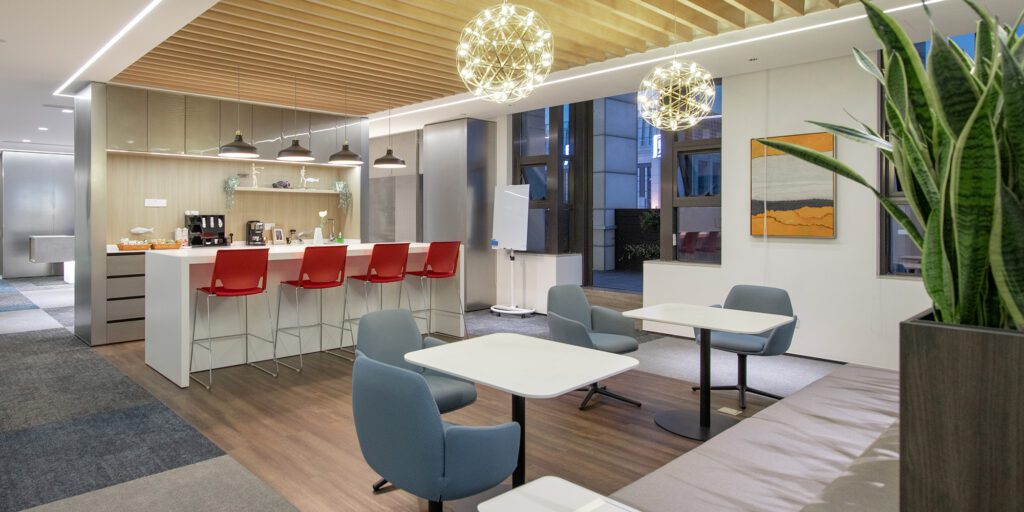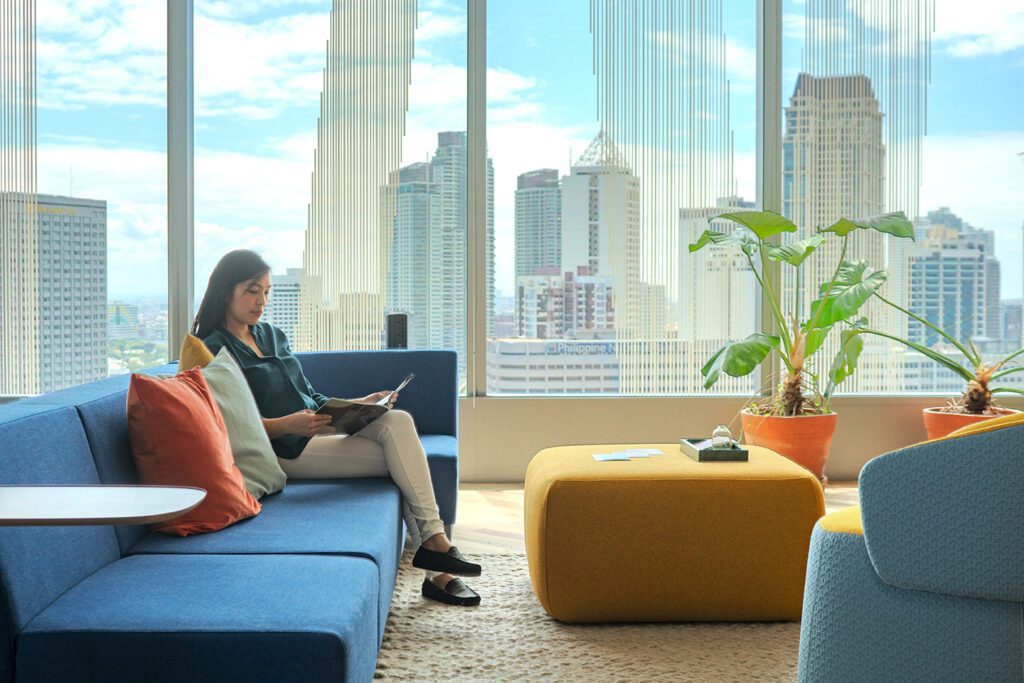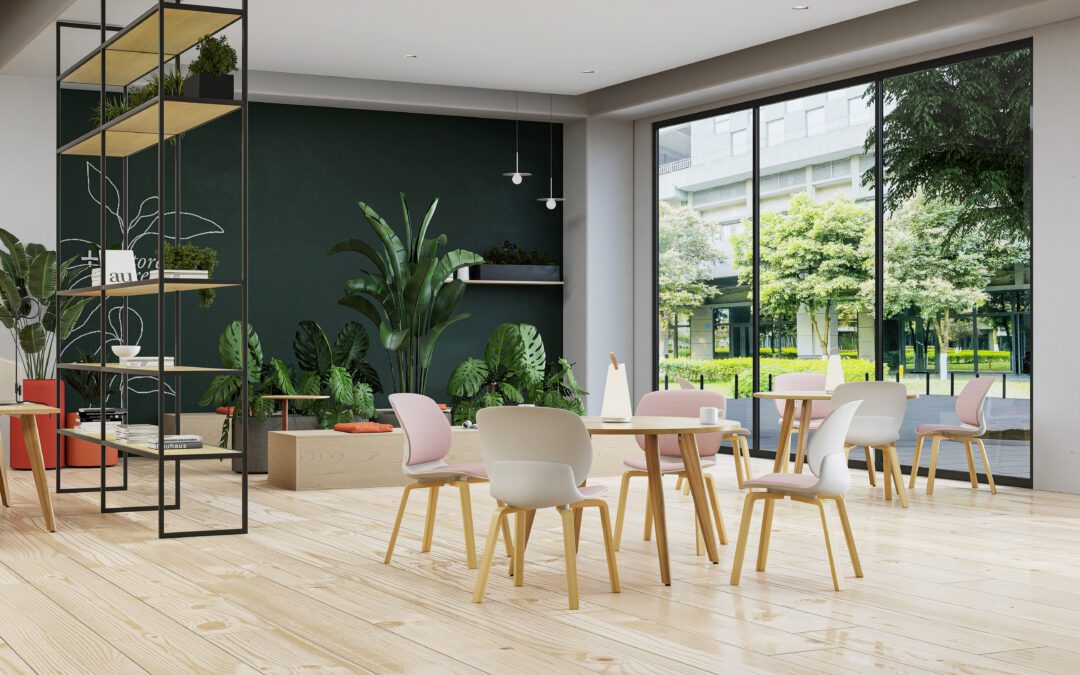Whether you work at home, in the office, or in the coffee shop next door, creating the right environment to do your best work is crucial. You can find a comfy chair, a large desk and a monitor–but nothing transforms an environment like lighting. A simple yet significant element, lighting has the power to impact not just our productivity, but our mood, emotions, and overall well-being. This is why, in today’s modern office, employers are seeking to leverage the power of light through effective design solutions to support their employee’s needs.
Invite the Sunlight
Natural light has proved to boost workplace productivity time and time again. It affects a number of health aspects including natural dopamine levels, mood, alertness, and vitamin D levels–ultimately leading to heightened productivity levels.
Because of these benefits, employees have named natural lighting, and views of the outdoors as some of their most highly-sought out workplace features. Incorporating sunlight into the office has now become imperative more than ever. Corporations that have installed ceiling-to-floor windows made of smart glass have reported a 40% increase in daylight quality, with an 84% drop in conditions brought about by staring at a computer for too long. These include eyestrain, blurred vision and headaches, ultimately detracting employees from their productivity potential.
Fortunately, with the recent progress in the understanding of the effect that different light sources can have on our mood, replicating the benefits of natural light for all, whether day or night, is possible.
The Power of Light Color Temperature

You’ve probably heard light described as “warm” and “cool.” Counterintuitively, lower temperatures are referred to as, “warm,” while higher temperatures are referred to as, “cool.” Incorporating warm and cool color temperatures into your office’s lighting design can also help you harness great rewards.
Higher-temperature lighting has shown to result in higher workplace productivity by possessing the ability to counteract the effects of Seasonal Affective Disorder. With this condition impacting up to 14% of all adult workers, the initiative to provide higher-temperature lighting is worth it. In fact, a two-month study conducted by the University of Greenwich revealed that workers who worked under “blue-enriched” light bulbs reported feeling more alert, less eye strain, and overall happier.
Here’s a guide on the best context to use different color temperatures:
Warm: Creates a sense of relaxation and comfort, can be used in Intimate settings, such as break rooms
Mid: Welcoming while still being cool enough to promote alertness; can be used in conference rooms to relax employees while still encouraging them to participate.
Cold: Improves productivity, mood, and alertness. Reduces fatigue by lowering melatonin levels; perfect for brainstorming rooms to promote a continuous flow of ideas and engagement.

Whether you’re welcoming the sunlight in with large windows or replicating natural sunlight’s effects by leveraging the different effects light temperature has on your employees, taking the time to prioritize lighting solutions in the workplace will prove worthwhile for the company’s success and employee-retention initiatives.
Need help in determining the best lighting design for your workplace? Contact TRBI today.


Recent Comments